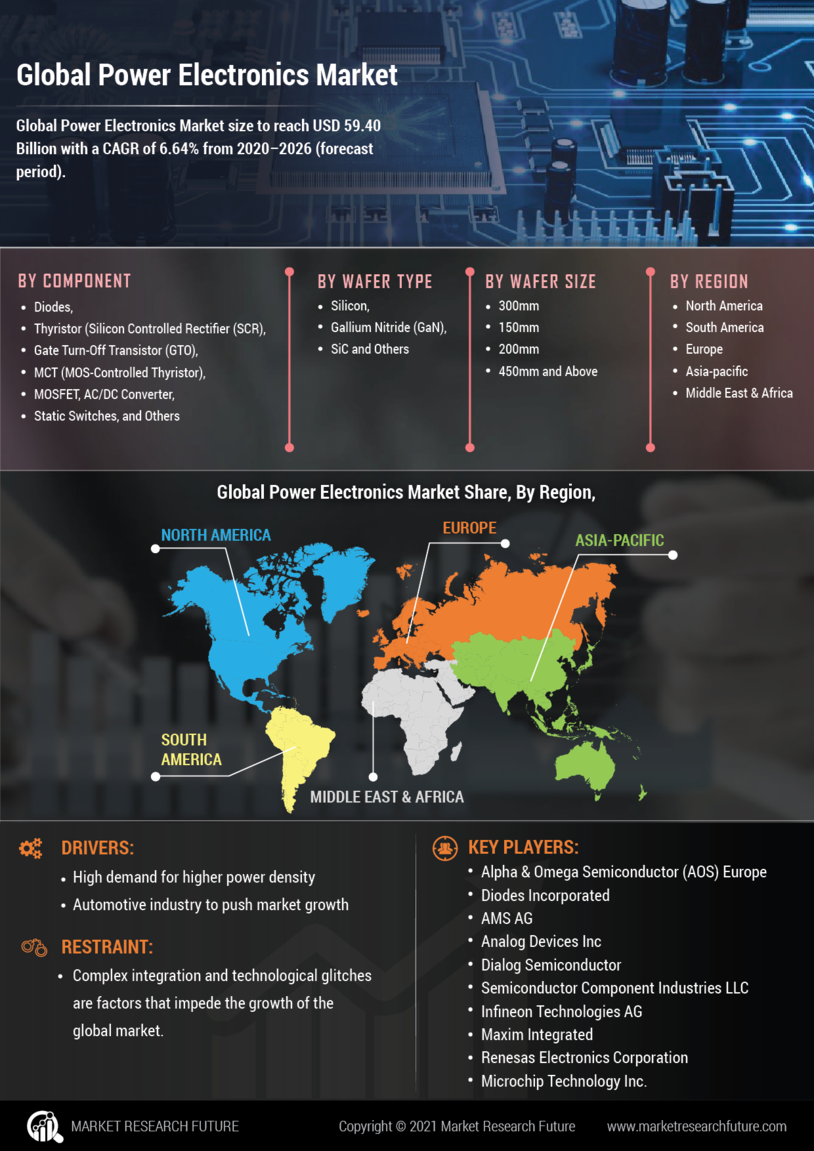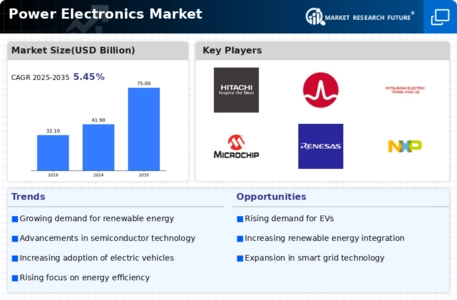Rising Demand for Energy Efficiency
The Power Electronics Market is experiencing a notable surge in demand for energy-efficient solutions. As industries and consumers alike become increasingly aware of the environmental impact of energy consumption, there is a growing emphasis on technologies that minimize energy waste. This trend is reflected in the projected growth of the power electronics market, which is expected to reach USD 50 billion by 2026. Energy-efficient power electronics not only reduce operational costs but also contribute to sustainability goals, making them a priority for manufacturers and end-users. The integration of advanced power management systems is likely to further enhance the efficiency of electronic devices, thereby driving the market forward.
Growing Demand for Smart Grid Technologies
The Power Electronics Market is increasingly driven by the growing demand for smart grid technologies. As energy systems become more complex, the need for efficient power management and distribution is paramount. Smart grids utilize advanced power electronics to facilitate real-time monitoring and control of energy flow, enhancing reliability and efficiency. The market for smart grid solutions is projected to expand significantly, with power electronics playing a critical role in enabling these technologies. This trend not only supports the modernization of energy infrastructure but also aligns with global sustainability goals, making power electronics an essential component of future energy systems.
Expansion of Electric Vehicle Infrastructure
The Power Electronics Market is significantly influenced by the expansion of electric vehicle (EV) infrastructure. As governments and private sectors invest heavily in EV charging stations and related technologies, the demand for power electronics components is expected to rise. The market for EVs is projected to grow at a compound annual growth rate of over 20% in the coming years, necessitating robust power electronics solutions for efficient energy conversion and management. This expansion not only supports the automotive sector but also stimulates growth in related industries, such as renewable energy and smart grid technologies, thereby creating a synergistic effect that propels the power electronics market.
Increased Adoption of Renewable Energy Sources
The Power Electronics Market is witnessing a significant shift towards the adoption of renewable energy sources. As countries strive to meet their energy needs sustainably, the integration of solar, wind, and other renewable technologies is becoming more prevalent. This transition necessitates advanced power electronics for efficient energy conversion and grid integration. The market for power electronics in renewable applications is projected to grow substantially, driven by the need for inverters, converters, and controllers that optimize energy flow. This trend not only enhances energy security but also aligns with global efforts to reduce carbon emissions, thereby reinforcing the importance of power electronics in the energy landscape.
Technological Innovations in Power Electronics
The Power Electronics Market is characterized by rapid technological innovations that enhance performance and functionality. Advancements in semiconductor materials, such as silicon carbide and gallium nitride, are enabling the development of more efficient and compact power electronic devices. These innovations are crucial for applications ranging from consumer electronics to industrial automation. The market is expected to benefit from these advancements, as they allow for higher power densities and improved thermal management. Furthermore, the ongoing research and development efforts in this field suggest that the power electronics market will continue to evolve, offering new solutions that meet the demands of various sectors.















Leave a Comment